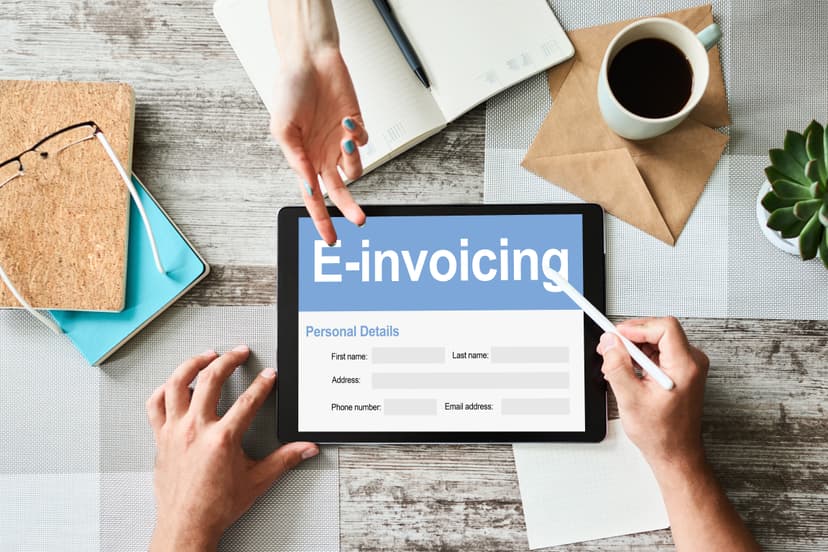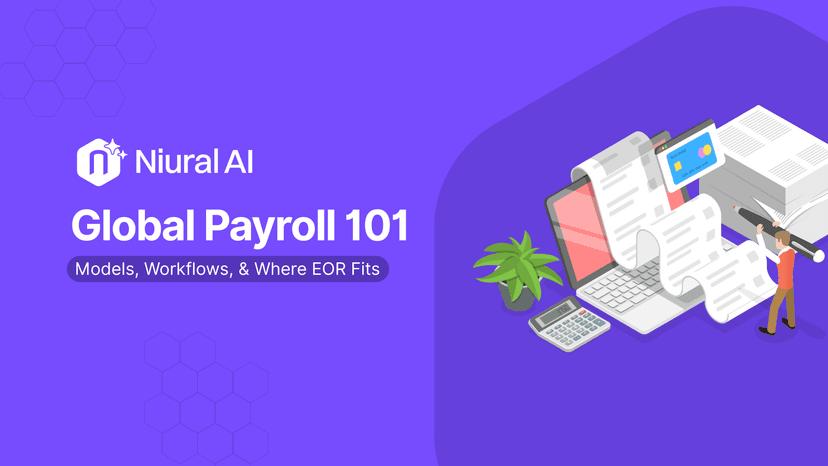When you're expanding globally, the question isn't just how to hire, it's how to protect your business while hiring.
For finance leaders, the choice between a Professional Employer Organization (PEO) and an Employer of Record (EOR) is a strategic decision with direct implications for compliance exposure, financial visibility, cost efficiency, operational control, and speed of market entry. The primary difference is structural: a PEO functions as a co-employer, while an EOR becomes the legal employer.
This guide breaks down the PEO vs EOR dynamic, offering strategic and operational distinctions that help CFOs choose the right solution for international hiring.

Compare PEO vs EOR to find the best fit for your business. (Source: Pexels)
What is a PEO?
A Professional Employer Organization (PEO) establishes a co-employment relationship. Your company retains legal employer status and operational control, while the PEO manages payroll, benefits, tax filings, and compliance support.
Legal Requirement: To work with a PEO, your company must have a legal entity in the target country.
When PEOs Make Sense:
- You have an established presence in the target market.
- You're hiring long-term employees and building local teams.
- You want access to competitive benefits plans without building infrastructure.
Benefits for Finance Leaders:
- Cost Efficiency: Pooled benefits across clients help lower insurance and benefits costs.
- Compliance Support: The PEO handles local, state, and international compliance while sharing liability. The extent of liability sharing may vary by jurisdiction.
- Operational Scalability: PEOs adapt as you grow without overwhelming your finance or HR teams.
Learn more about Niural’s PEO.
What is an EOR?
An Employer of Record (EOR) becomes the legal employer on your behalf. You direct employee performance, but the EOR takes responsibility for payroll, taxes, benefits, and local compliance. It’s a strategic option for rapid, compliant market entry without needing to form a local subsidiary.
Note: The term “global PEO” is sometimes used interchangeably with EOR services, but the two models differ. Global PEOs may still require entity establishment, while true EORs typically do not.
When EORs Make Sense:
- You lack a legal entity in the country.
- You need to enter new markets quickly.
- You want to hire remote or short-term workers without setting up a local office.
- You’re operating in high-risk or complex labor environments.
Benefits for Finance Leaders:
- Fast Market Entry: EORs let you hire immediately with no entity setup.
- Risk Mitigation: EORs help manage compliance obligations, but clients retain some responsibility for proper classification and work direction.
- Cost Savings: EORs generally have lower upfront costs but may be more expensive in the long term for large employee populations in a single country.
Learn more about Niural’s EOR.
PEO vs EOR: At a Glance

Risk Management: The Deciding Factor
For CFOs, risk management is paramount. EORs provide a buffer by helping manage compliance obligations and assuming certain employment liabilities, which is especially critical in jurisdictions with complex regulations or high misclassification risk.
If you're scaling across borders or hiring internationally, EORs help embed compliance from day one, minimizing exposure to penalties, audits, or litigation.
Financial Considerations: PEO vs EOR Costs
Both models carry service fees, but smart finance leaders evaluate the full financial picture:
- PEO: Typically charges a per-employee fee or a payroll percentage. Ideal for long-term, in-country teams with legal infrastructure already in place.
- EOR: Fees are often higher per employee, but offset by eliminating entity setup and legal maintenance. Pricing varies by region — for example, $300–$1,500/month in Asia versus $1,000–$2,000/month in the United States. It reduces time-to-hire and shields you from the overhead costs of managing compliance independently.
Niural’s client Slingshot AI achieved a 40% reduction in benefits costs, 75% faster onboarding, and 80% lower payroll processing time, a clear case of how the right model delivers real financial impact.

Assess your hiring needs and choose the right PEO or EOR partner. (Source: Pexels)
CFO Takeaway
When assessing cost, include:
- Legal and entity setup expenses
- Compliance and HR workload
- Time-to-hire and speed of market entry
- Fines and penalties avoided
The right model is not just about cost, it's about return on effort, speed, and compliance confidence.
Niural's Workforce Solutions: PEO or EOR
Niural provides both PEO and EOR services in a single, AI-powered platform. Whether optimizing a mature market or entering new ones, you gain:
- Real-time compliance alerts.
- Integrated payroll and HR across countries.
- Localized onboarding and document workflows.
- Unified global reporting.
Why Finance Leaders Trust Niural
We give CFOs visibility, control, and peace of mind. Instead of micromanaging global ops, you get clean data, full audit trails, and strategic oversight. Your workforce model impacts compliance risk, burn rate, and agility. The key PEO vs EOR differences lie in their structure. A PEO offers control in stable markets. An EOR unlocks speed and protection in new ones. Whatever your growth path, Niural ensures you stay compliant, efficient, and in command.
Schedule a demo today to see which model fits your workforce strategy.



